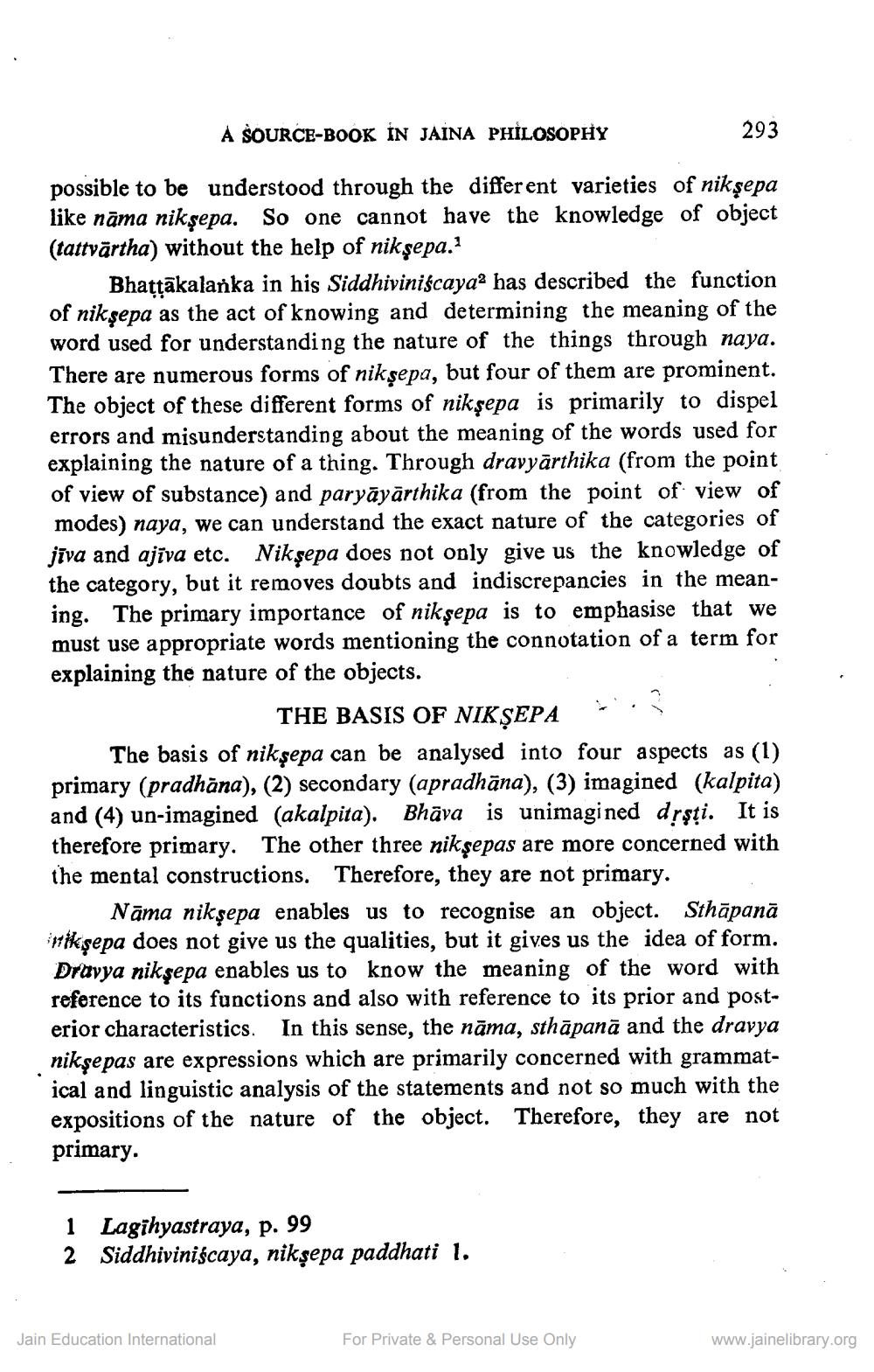________________
A SOURCE-BOOK IN JAINA PHILOSOPHY
possible to be understood through the different varieties of nikṣepa like nāma nikṣepa. So one cannot have the knowledge of object (tattvärtha) without the help of niksepa.1
Bhaṭṭakalanka in his Siddhiviniscaya has described the function of niksepa as the act of knowing and determining the meaning of the word used for understanding the nature of the things through naya. There are numerous forms of niksepa, but four of them are prominent. The object of these different forms of niksepa is primarily to dispel errors and misunderstanding about the meaning of the words used for explaining the nature of a thing. Through dravyarthika (from the point of view of substance) and paryāyārthika (from the point of view of modes) naya, we can understand the exact nature of the categories of jīva and ajīva etc. Nikṣepa does not only give us the knowledge of the category, but it removes doubts and indiscrepancies in the meaning. The primary importance of niksepa is to emphasise that we must use appropriate words mentioning the connotation of a term for explaining the nature of the objects.
293
THE BASIS OF NIKṢEPA
The basis of nikṣepa can be analysed into four aspects as (1) primary (pradhana), (2) secondary (apradhāna), (3) imagined (kalpita) and (4) un-imagined (akalpita). Bhāva is unimagined drşti. It is therefore primary. The other three niksepas are more concerned with the mental constructions. Therefore, they are not primary.
Nāma nikṣepa enables us to recognise an object. Sthāpanā niksepa does not give us the qualities, but it gives us the idea of form. Dravya nikşepa enables us to know the meaning of the word with reference to its functions and also with reference to its prior and posterior characteristics. In this sense, the nāma, sthāpanā and the dravya nikşepas are expressions which are primarily concerned with grammatical and linguistic analysis of the statements and not so much with the expositions of the nature of the object. Therefore, they are not primary.
1 Lagihyastraya, p. 99
2 Siddhiviniscaya, nikṣepa paddhati 1.
Jain Education International
For Private & Personal Use Only
www.jainelibrary.org




